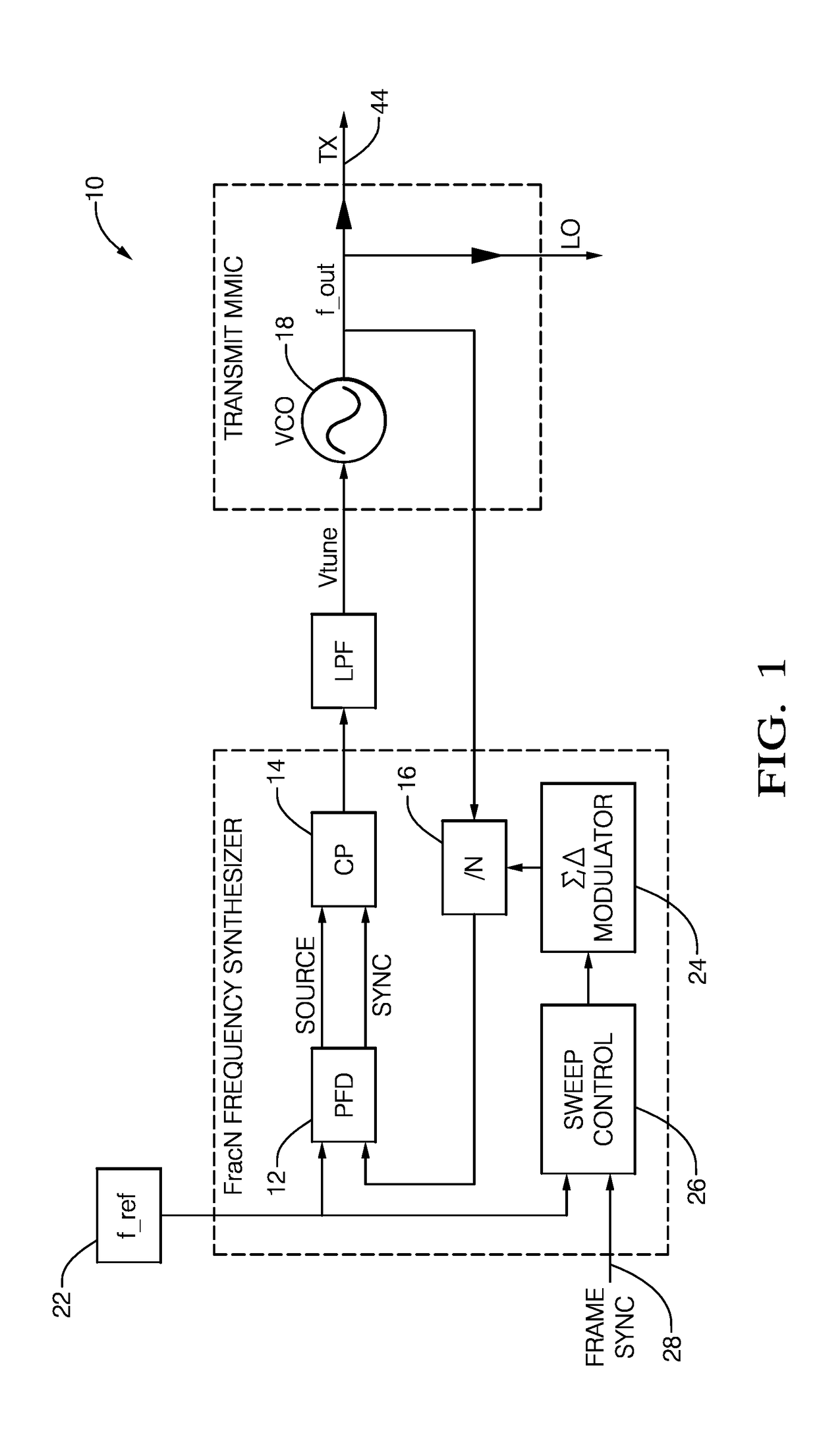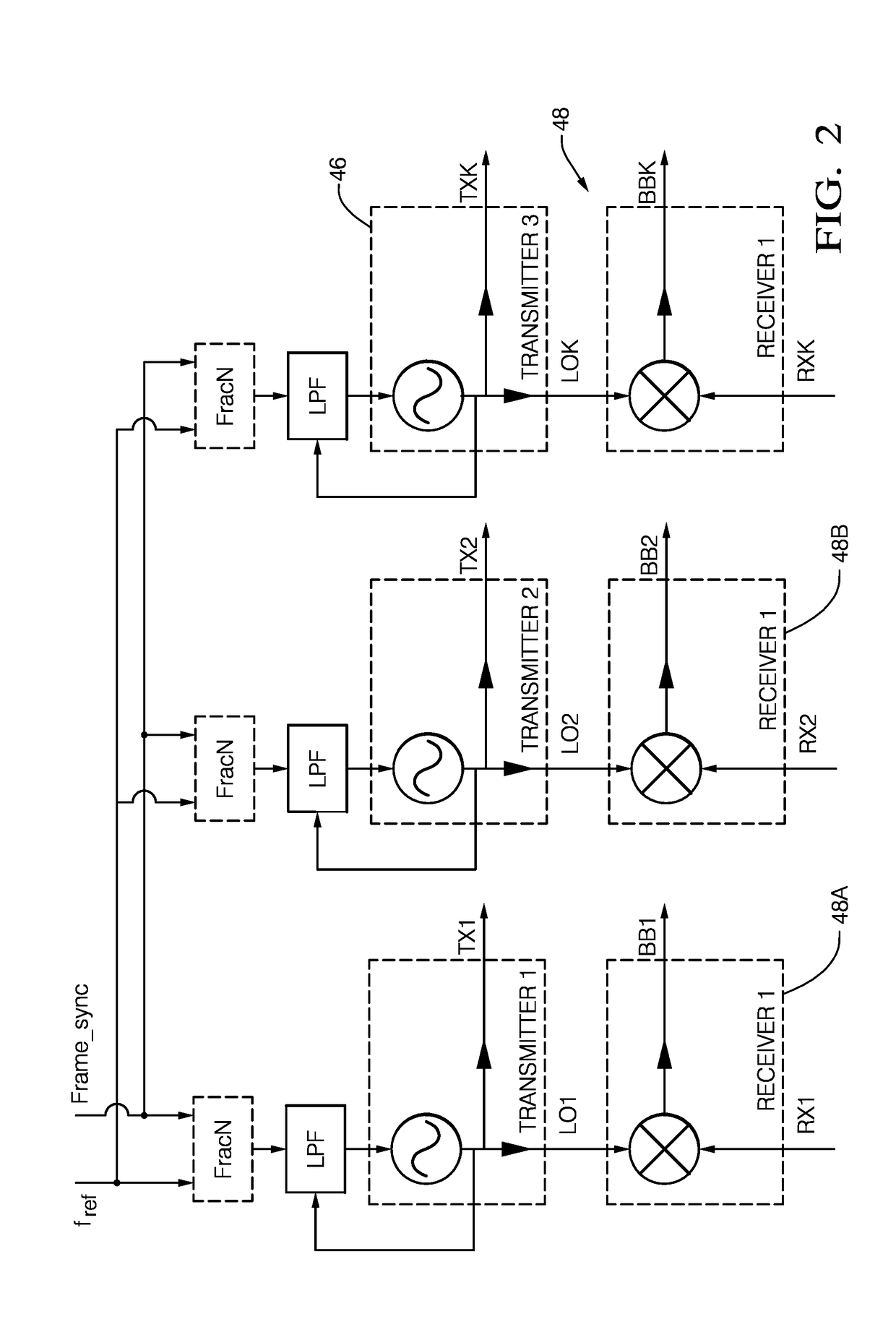Bi-static radar system
a radar system and bi-static technology, applied in the field of bi-static radar system, can solve the problems of phase noise and range delay, and the difference in the start time of these waveforms
- Summary
- Abstract
- Description
- Claims
- Application Information
AI Technical Summary
Benefits of technology
Problems solved by technology
Method used
Image
Examples
Embodiment Construction
[0015]FIG. 1 illustrates a non-limiting example of a portion of a bi-static radar system, hereafter the system 10, which includes a phase-frequency detector, hereafter the PFD 12. The PFD 12 provides an output that controls or commands a charge-pump 14 (labeled CP) to either source or sink current, based upon edges received from the reference and VCO feedback signals. The block labeled ‘ / N’ is a divide-by-N divider, hereafter N-divider 16, which is used to divide down f_out which is the output of a voltage-controlled-oscillator 18 or VCO 18 that is feedback to the PFD 12. The phase-lock-loop (PLL) that includes the PFD 12 and the VCO 18 will try to lock the phase of the divided signal to a reference frequency (f_ref) output by a reference oscillator 22. The sigma delta (ΣΔ) modulator 24 varies the value of N that characterizes the operation of the N-divider 16 to provide various fractional divisor values. The output of a sweep-control 26 will vary the fractional N-divider value over...
PUM
 Login to View More
Login to View More Abstract
Description
Claims
Application Information
 Login to View More
Login to View More - R&D
- Intellectual Property
- Life Sciences
- Materials
- Tech Scout
- Unparalleled Data Quality
- Higher Quality Content
- 60% Fewer Hallucinations
Browse by: Latest US Patents, China's latest patents, Technical Efficacy Thesaurus, Application Domain, Technology Topic, Popular Technical Reports.
© 2025 PatSnap. All rights reserved.Legal|Privacy policy|Modern Slavery Act Transparency Statement|Sitemap|About US| Contact US: help@patsnap.com



